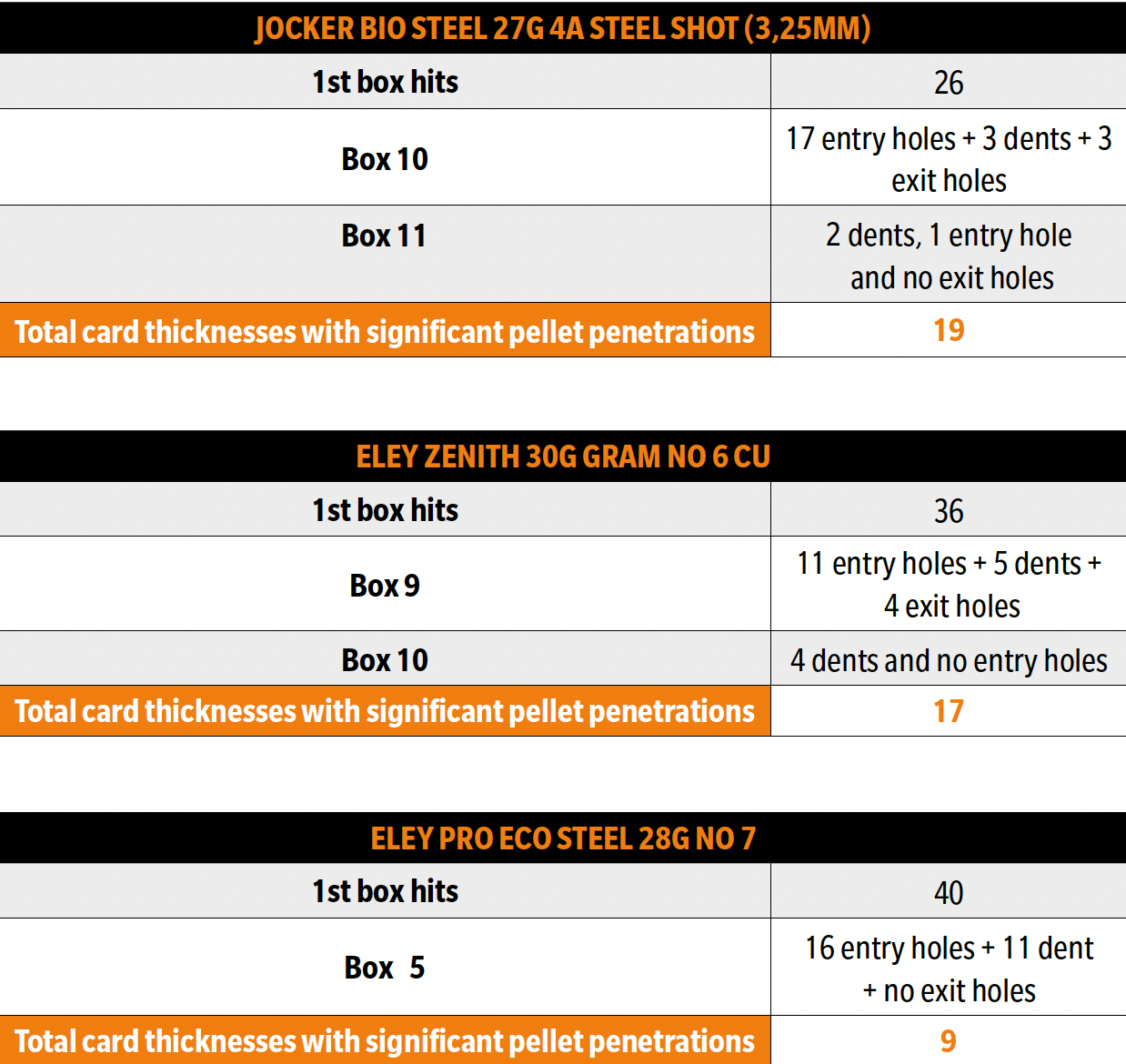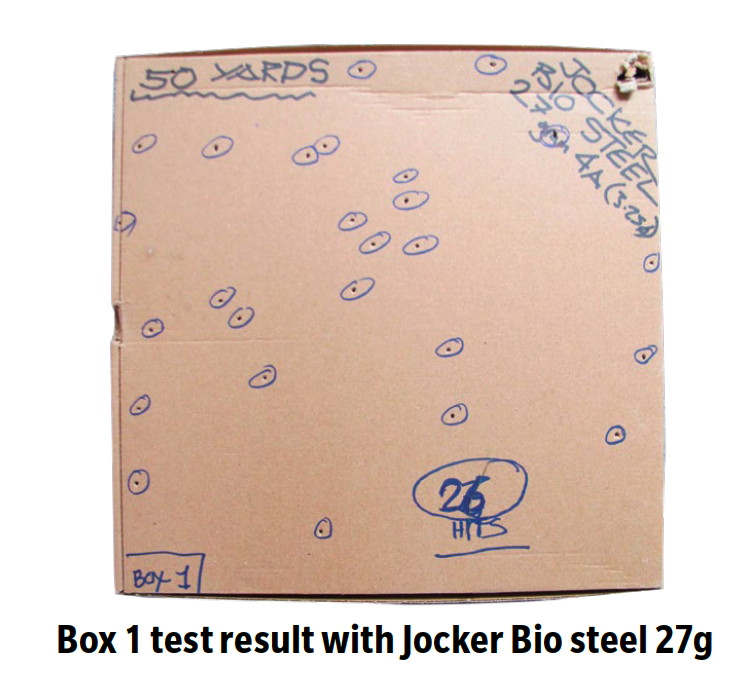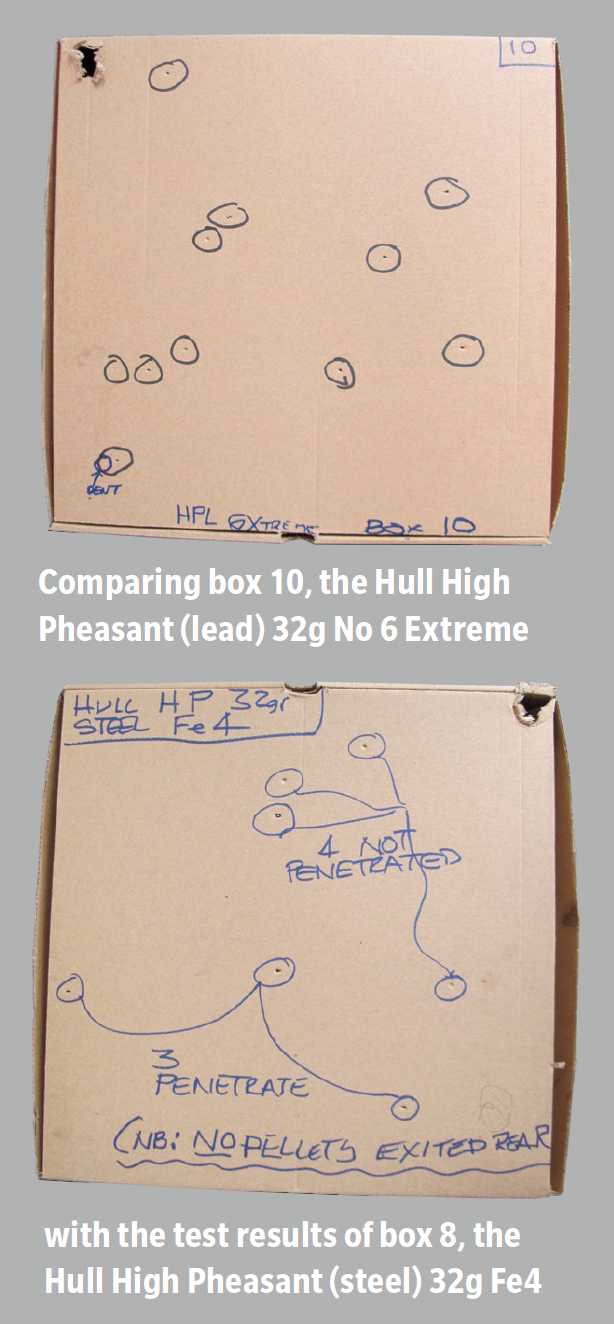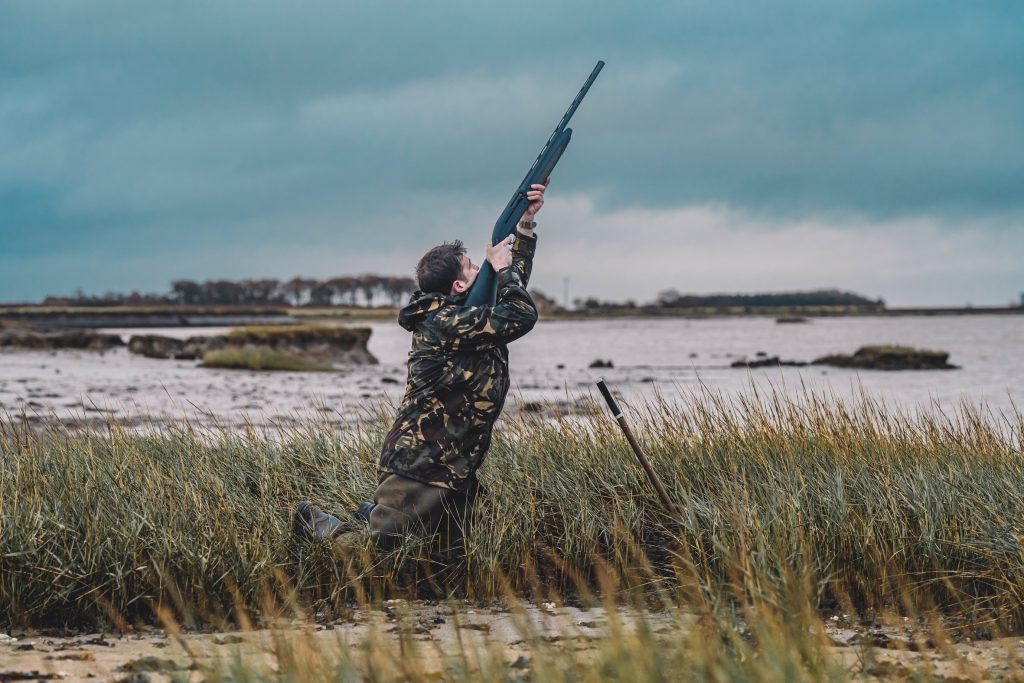Win CENS ProFlex DX5 earplugs worth £1,149 – enter here
Steel vs lead: testing pellet power with pizza boxes
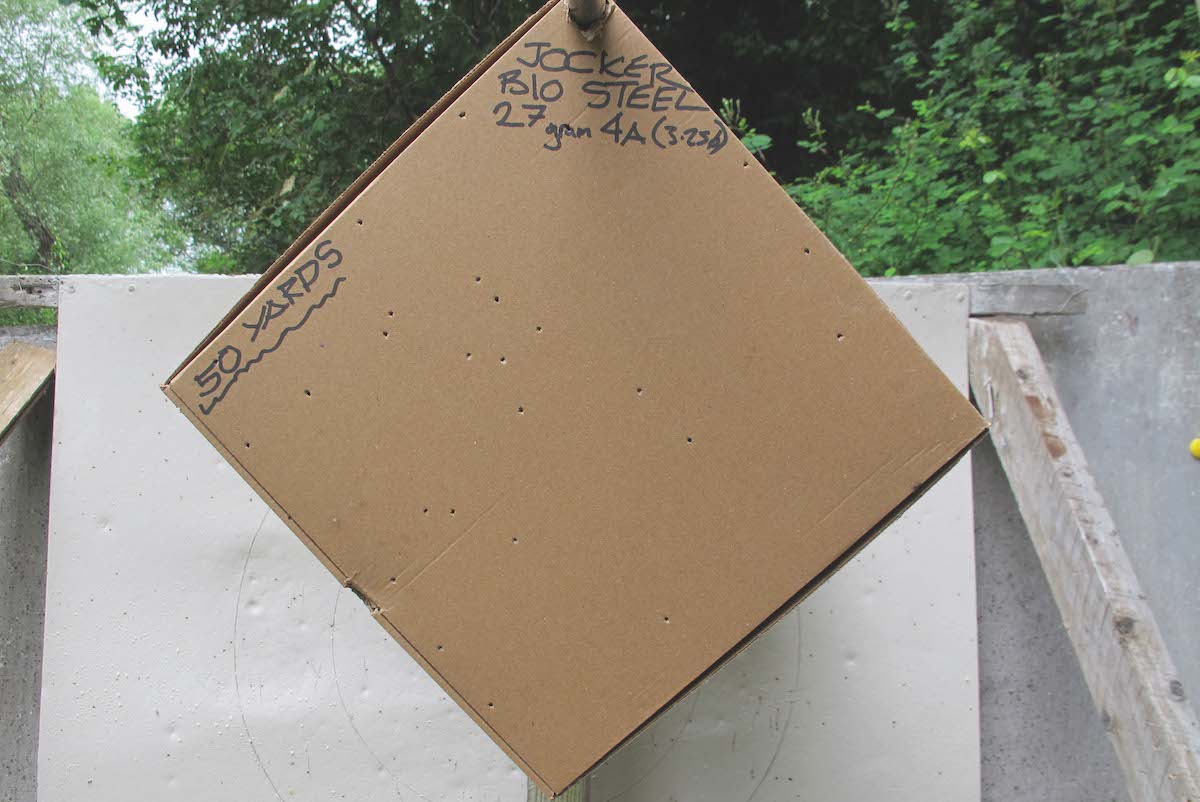 Penetration test-pizza boxes
Penetration test-pizza boxes
One of the biggest upheavals to the way we conduct our shooting is unfolding before our eyes. The move away from lead ammunition continues to confound and divide those within the sport, with many left wondering how it will affect them and concerned as to what equipment they will be able to use.
How many times has the question been asked: “Will my gun be OK with steel shot cartridges?” I’m sure that it will be asked many more times. The many forums on social media make it clear that there are still a great many people only just becoming aware of what is going on.
Why I took on steel vs lead shot testing
Sporting Gun tries to assist readers work their way through this minefield of concerns and put things in some perspective. The situation is a developing one and there is still much work to be done by major associations, cartridge companies, gunmakers and all involved with any aspect of the various forms of our sport. Even game dealers, it seems, are upping the ante for change. They have piled the pressure upon larger game shoots by stating their intention to no longer accept game shot with lead shot from the 2022 season. Small wonder there is concern and, at times, more than a little confusion.
The basic facts of the problems are simple to see, but the solutions are far from easy. Cartridge manufacturers are probably in the most difficult situation they have ever faced.
The industry is already beset with the problems of a global shortage of key components – along with unprecedented levels of price increases due to high demand for all components – and at a time component makers are still recovering lost production resulting from Covid-enforced closures and restrictions. Now the pressures to ‘go green’ and move away from lead shot to non-toxic alternatives and to ditch conventional plastics for plastic wad manufacture (when steel shot will enforce the use of plastic wads for a majority of cartridge makers) are all making for a torrid time for cartridge manufacturers.
Responsibility
As all shooters know, the most fundamental principle that guides all shooting sports is responsibility. That covers every aspect from the safety we must ensure for all involved to the respect we show one another and especially to the quarry we pursue. (Read more on respect for quarry.)
Respect for quarry must always trump all else for without it there is no long term future for any live quarry shooting. That is why we should always endeavour to be the best shot we can be, know our limitations and be sure we shoot within our skill level when in the field.
Chipped clays
Clay shooters will be faced with extra long clay targets from time to time and the one or two chipped clays will reveal that, at range, we need to hone our technique and be sure we use the most appropriate equipment. Those extra-long clays can reveal that the budget cartridges we use successfully for the majority of targets don’t do quite so well at range. This is easily discovered for oneself and, in the process, nothing but some chipped clays will be harmed.
Premium cartridges perform better at distance in the field too. However, in the field, discovering this is not so simple. Using equipment not best suited to the task can only result in ‘pricked’ or wounded quarry, be it a pheasant, pigeon, crow or pheasant. It is inevitable that this will occur from time to time but, as true sportsmen, it is our duty and should be our desire to minimise this as far as possible. (Read what’s the most humane way to dispatch a pricked bird.)
The reason for emphasising this is because we are all being pressured into a situation not of our making (but one we cannot avoid) that undermines everything we have learned to date. Not everyone has the inclination continually to study, research and experiment with all the fascinating aspects of cartridge performance, and that’s fine. These topics have been discussed, dissected, tested, appraised and reported on in books and conversations for more than 100 years.
We have not needed to become so deeply involved to arrive at good choices of gun, choke and cartridges for the sport we engage in. It is something that has been established over the years and is as near ‘common knowledge’ as anything is today.
But that is all changing, rapidly. All the superb work that can be found in books that have brought sound knowledge and advice to shooters over a vast period of time now counts for little because virtually all that effort, experiment and knowledge was arrived at with the common projectile material: lead.
I have been testing shotgun ammunition for more than 50 years, since my first 0.410 blew a pigeon’s head off at approaching 30 yards. My first steel-pattern plate ended up with holes through it from the balled shot produced by the fibre wad cartridges I was using and sparked a lifetime of needing to know how all cartridges performed.
My many years of testing cartridges and discovering what works well, and less well – also which things affect what aspect of cartridge performance – have, inevitably, been based upon tests with lead shot cartridges. We hear all sorts of things mentioned as to how steel shot does this or that. In reality, and from my obviously far more limited experience with steel shot ammunition, few of those making fairly sweeping statements about what steel shot field, game and clay cartridges will (or will not) do, have limited experience of testing or using it.
Respect for quarry
Given the absolute need for respect for quarry, so much stressed over the years, I find it more than a little odd that we can move forward, at pace, with little more than a few bland and broad-brush statements – even from the major shooting and gun associations – that mostly go little beyond some suggestion that we “go up two shot sizes from our preferred lead shot choice”.
I am disappointed so little good, proven and verified advice is currently available. Of course, only limited steel shot ammunition is available to test and some makers are reluctant to send samples to independent sources for testing. It’s hard for manufacturers trying to develop new cartridges, with new wads and having to use bio/eco plastics, too, and all needing to be done to, frankly, unrealistic deadlines. This is, from any thoughtful perspective, a recipe for an unsatisfactory outcome.
My prime concern is that in being pushed to change so fundamentally, at speed, with a need to use new and untried materials, the risk to our sport will be increased.
Potential damage to some guns remains but can be mitigated by due caution. However, none of us will be sure how our guns or the cartridges we buy will perform in the field. That raises the prospect of more wounded quarry. This will upset and disappoint shooters, dog handlers and pickers-up for sure. However, the real risk comes from those who are already attacking our sport and monitoring what we do. If videos should emerge of too many pricked birds fluttering down or coasting on – for the dogs to have to chase for considerable distances – these will be used against us.
We must do all we can to minimise these risks. That means knowing more about your gun and ammunition than you ever needed to before. Your effective shooting range may well be compromised by the ammunition used and quarry you had gained knowledge of how far you could ‘stretch’ your barrels. With your chosen lead shot cartridge and the choke in your gun, could well require resetting to a shorter distance.
No one can tell with certainty how different guns will perform with the new breed of cartridges still very much in their development infancy. However, Sporting Gun is keen readers have access to information that may help improve knowledge and understanding of some key aspects and can assist in making informed choices. The information from test results will hopefully inspire more shooters to undertake some research and testing of their own. Ultimately, we all need to know how the equipment combination we choose to use performs.
A total of 15 pizza boxes are set up on a steel tube
Performance
Regular readers will recall the recent test results comparing steel vs lead shot cartridges from highly respected cartridge maker Hull Cartridge. These showed that the premium grade Hull High Pheasant lead shot loads performed admirably and set the standard for steel shot equivalents to match.
Pattern testing is relatively straightforward – if time-consuming – but is essential to establish that any cartridge is capable of producing good, effective patterns consistently. Patterns are, however, only one part of the two essentials of any game cartridge; penetration is essential, too. Producing a dense pattern is simple – if small shot is used. But small shot has less energy per pellet and loses that energy more quickly than larger shot pellets. Large pellets retain energy longer but, of course, there are fewer of them for any given shot load weight: and this is the conundrum which shooters, ballistic experts and cartridge makers have wrestled with since shotguns were invented.
As with most things, arriving at the best recipe for the most effective cartridge for any given purpose is a question of balance.
Fundamentally, what is required is:
• To produce sufficiently dense, regular patterns to ensure – so far as is possible – an adequate number of strikes to ensure vital parts can be struck.
• That the shot pellets retain sufficient energy, at the range the quarry is engaged, able to achieve adequate penetration and impart lethal damage.
• The size of shot – be it lead, steel or some other material – will differ according to the quarry. A woodcock will obviously be best tackled with smaller shot size than a high cock pheasant. The subtleties in requirements between these extremes requires more investigation and advice.
We can but hope that those who help and advise their membership – and the bodies in authority affecting cartridge and gun manufacture – are beavering away to provide us all, at the earliest opportunity, with sound, tested information and advice.
Meanwhile, I have been asked to conduct something more basic by way of testing the penetration performance of the cartridges we have looked at previously. (Read here.) It was during a visit to a favourite outdoor pizza venue that I had a moment of inspiration. After various ideas had been considered and materials priced up, I had my ‘pizza-box moment’. Here was something with a consistent construction, could be easily supported in alignment to be fired at, with as many boxes as might be required and, importantly, were a good size and inexpensive.
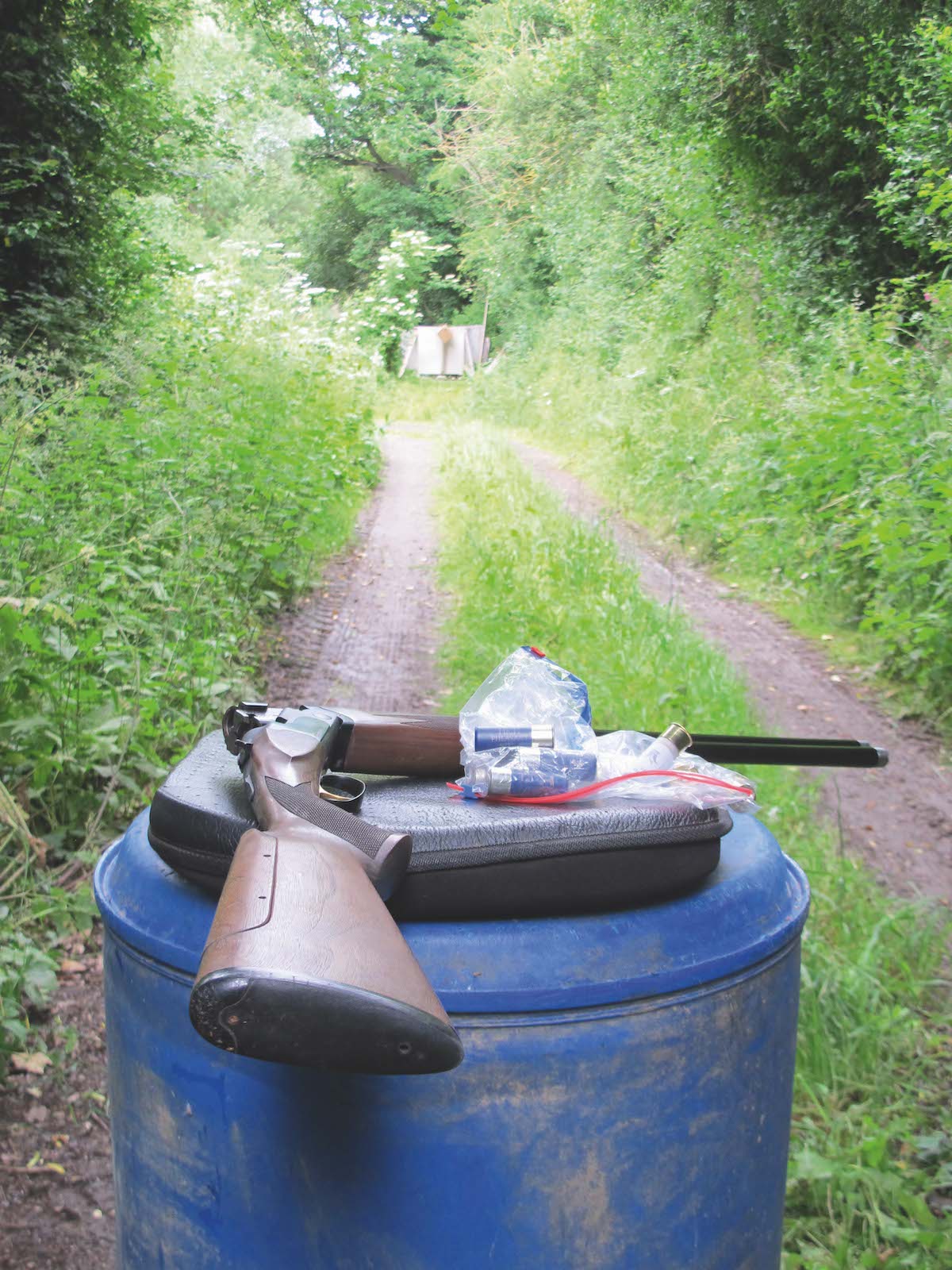
This 50 yards looks a long way
I made a hole in one corner of each box so I could thread them onto a tubular steel rod, the rod affixed atop a fence post. The assembly was then attached to my large, fixed pattern plate.
I decided that, as retained energy/penetration was the desired result, that 50 yards would be my starting point. This worked out well as even the greatest penetration achieved fell within the number of boxes my steel tube support would accommodate (14 boxes). This also allowed space between each box. This prevents the erratic results one can get with the old telephone-book-type approach, where compaction can interfere and results be inconsistent.
This may not be perfect ballistically, but does produce quite interesting comparative results that indicate the penetration capabilities for the shot types and sizes produce.
It may prove interesting to compare the penetration results alongside the earlier pattern test results to help determine where a good balance may be found.
 Penetration test
Penetration test
The total hits on the first box are influenced by the precision of my aim among other things. I will reshoot the Hull High Pheasant Fe4 steel shot cartridge with new boxes and check it again. However, these results should stand. Those with high first-box-hit count must have been well placed.
It is no surprise in my researches for steel vs lead that lead shot cartridges outperformed steel shot. Steel is lighter and using larger shot to compensate gives a greater area to be forced through the target, whether cardboard or quarry. This emphasises the need for caution in range judgement and shot selection.
The Jocker Bio ISO Steel 27g result is interesting. With CIP (Permanent International Commission for the Proof of Small Arms) rules putting a ceiling on both momentum and velocity for steel shot cartridges, the effect is revealed here. The lighter shot load cartridge can be loaded much closer to the maximum permitted velocity without risk of falling foul of CIP rules for standard steel cartridges, which all those tested are. Both the Hull and Jocker cartridges use the maximum standard steel shot size of 3.25mm, but the heavier shot load restricts how fast cartridge loaders dare get to the 425-metres-per-second, maximum-permitted velocity. Exceeding this could condemn a batch from sale in any CIP (small arms proof commission) country.
The relative effectiveness of quality lead shot is shown by the Eley Zenith No 6 Cu (copper-plated, high-antimony) shot. The good balance between the higher SG (specific gravity) of lead in a smaller diameter pellet resulted in an impressive penetration performance.
The Eley Pro Eco No 7 shot result will interest those who use clay target cartridges for shooting pigeon, rook, crow and such like. The lack of penetration with small sizes of steel shot must be borne in mind.
I hope this provokes thought and inspires some experimenting on clays and pattern boards. Remember that all lead shot cartridges can also be used in sound guns with more than half choke.
Related Articles
Get the latest news delivered direct to your door
Subscribe to Shooting Times & Country
Discover the ultimate companion for field sports enthusiasts with Shooting Times & Country Magazine, the UK’s leading weekly publication that has been at the forefront of shooting culture since 1882. Subscribers gain access to expert tips, comprehensive gear reviews, seasonal advice and a vibrant community of like-minded shooters.
Save on shop price when you subscribe with weekly issues featuring in-depth articles on gundog training, exclusive member offers and access to the digital back issue library. A Shooting Times & Country subscription is more than a magazine, don’t just read about the countryside; immerse yourself in its most authoritative and engaging publication.




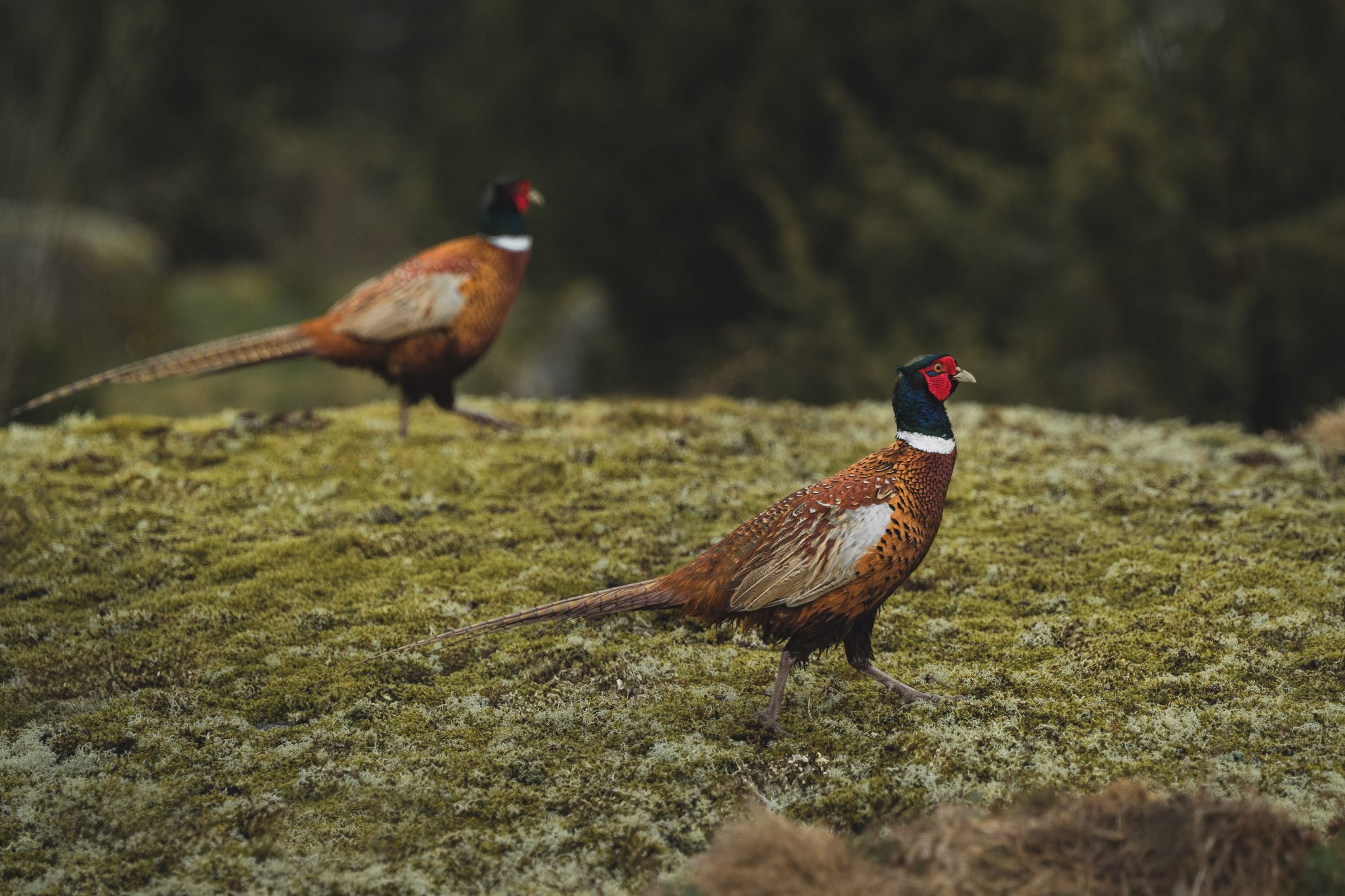

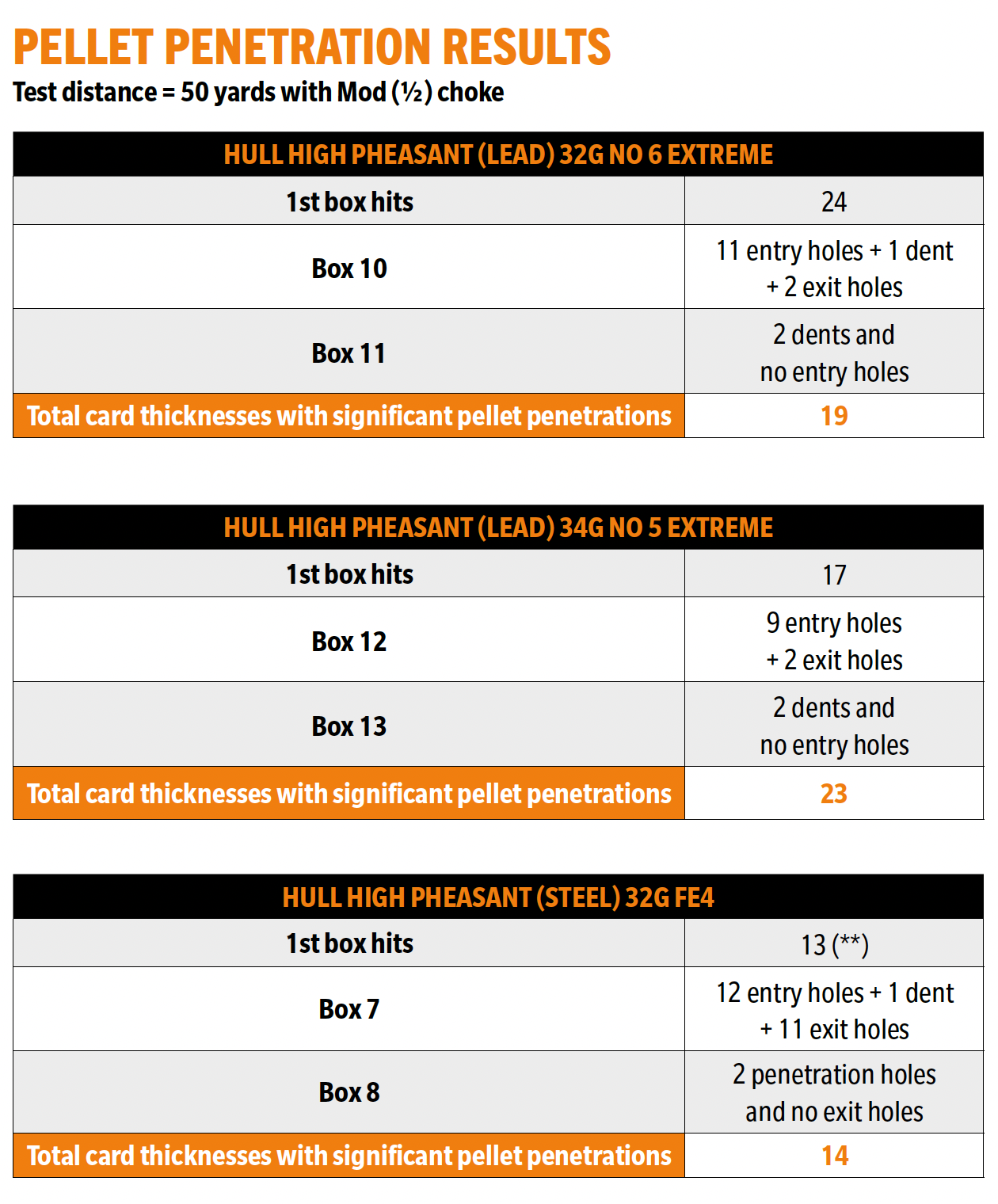 Penetration test
Penetration test